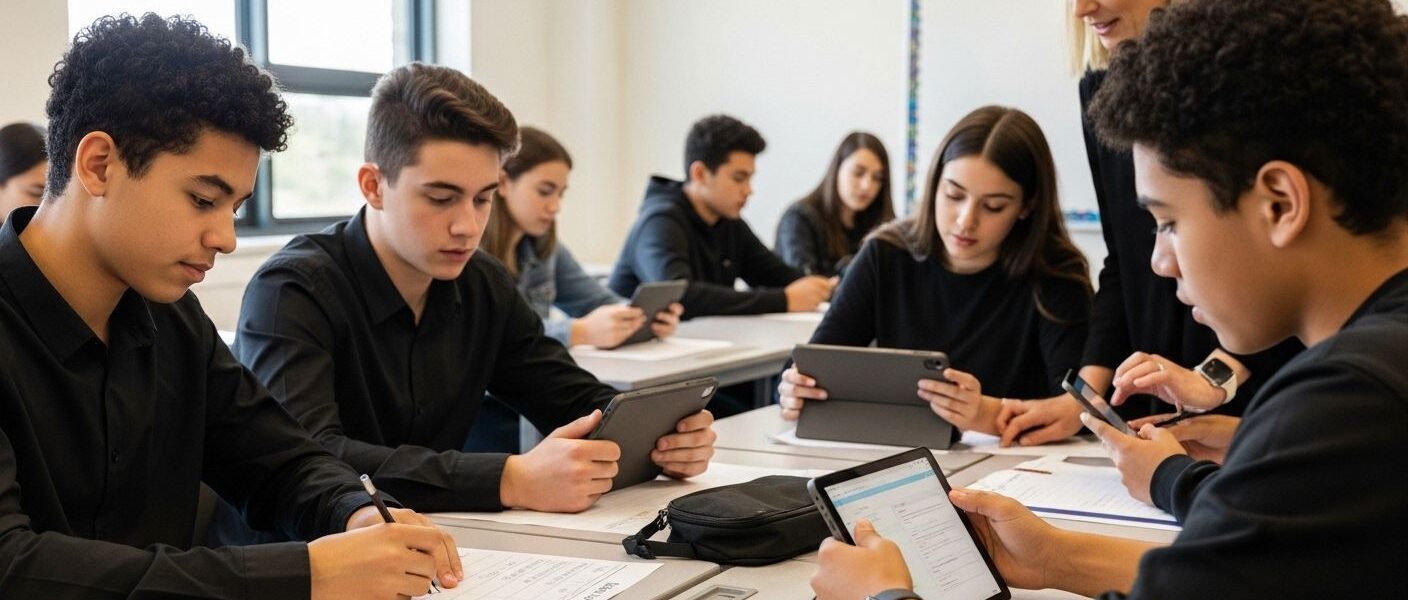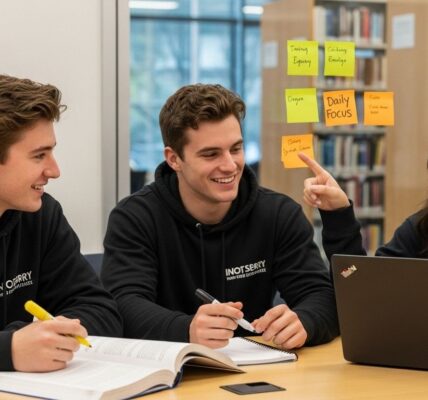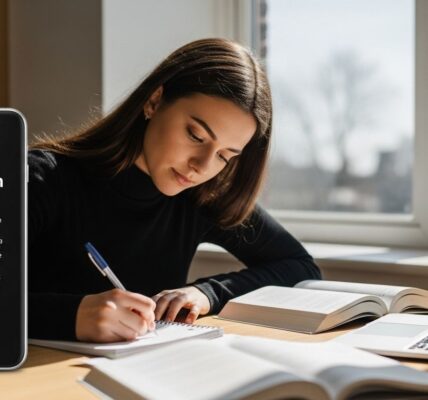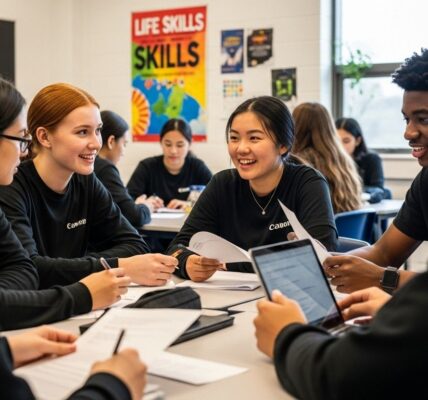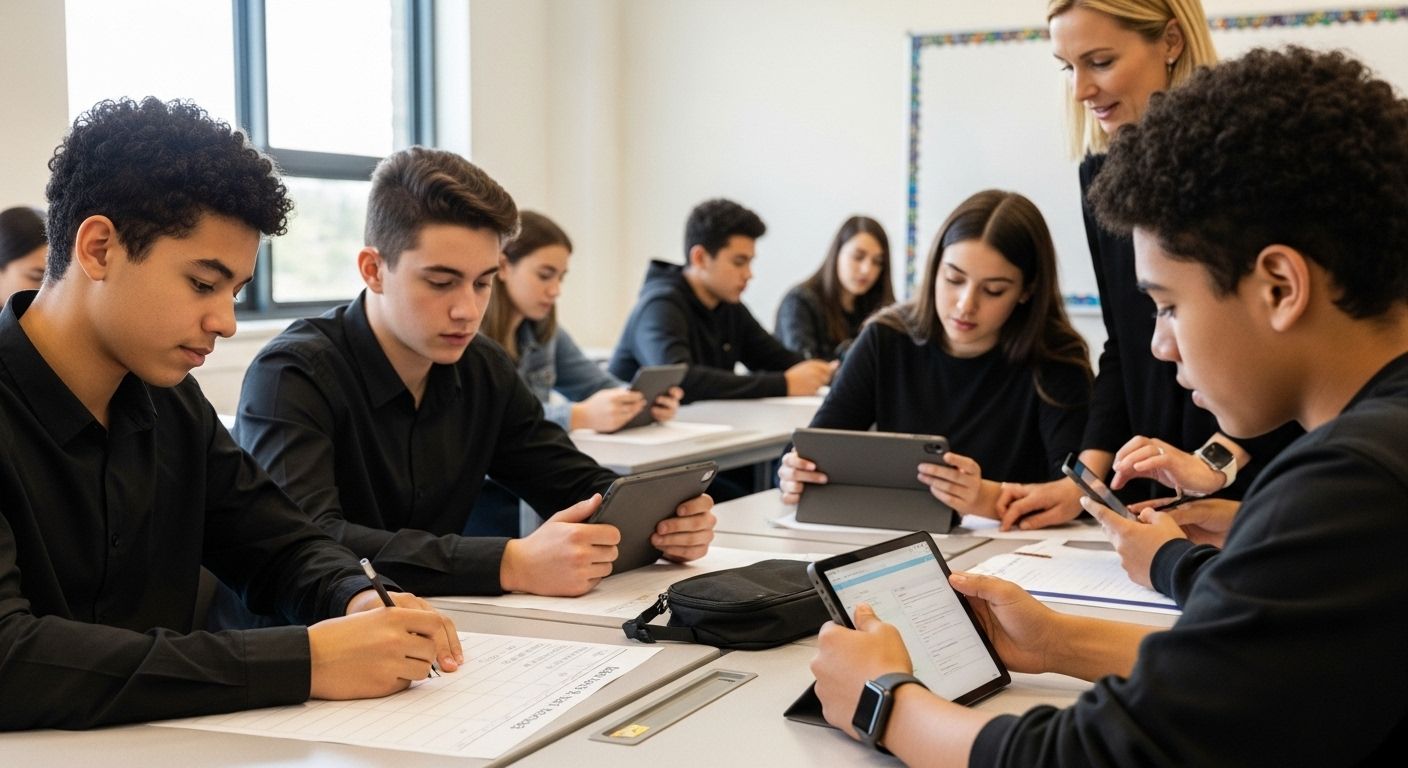
Student self-assessment gets tossed around a lot in education. Most people think it just means tracking your own grades. But the real surprise is that students who practice self-assessment regularly develop metacognitive skills that directly improve lifelong learning. It is not about obsessing over numbers at all. The true power of self-assessment comes from students learning how to analyze and adjust their own thinking, turning every challenge into a stepping stone for success.
Quick Summary
| Takeaway | Explanation |
|---|---|
| Understand self-assessment purpose | Self-assessment enhances student learning by promoting metacognitive skills, ownership, and critical thinking. |
| Set clear, specific learning goals | Concrete goals guide students in tracking their academic progress and maintaining motivation throughout their learning journey. |
| Develop a habit of reflection | Regular reflection transforms learning into an active process, helping students understand their strategies and areas for growth. |
| Utilize assessment tools and rubrics | Rubrics provide structured criteria for self-evaluation, helping students identify strengths and areas for improvement effectively. |
| Seek feedback from peers and teachers | Constructive feedback from others encourages collaboration and deeper understanding, enriching the learning experience for students. |
1: Understand the Purpose of Self Assessment
Student self-assessment is a powerful learning strategy that enables students to evaluate their own academic performance, progress, and growth. Understanding its core purpose is fundamental to effective implementation. At its heart, self-assessment involves students critically examining their work, learning processes, and achievements through structured reflection.
The primary goal of self-assessment goes beyond simple grade tracking. It helps students develop metacognitive skills essential for lifelong learning. By engaging in self-evaluation, students learn to:
- Recognize their strengths and areas for improvement
- Take ownership of their learning journey
- Develop critical thinking and analytical capabilities
According to research from the American Psychological Association, self-assessment promotes student engagement and intrinsic motivation. When students understand how to evaluate their own progress, they become more active participants in their educational experience.
Critical aspects of effective self-assessment include honest reflection, objective analysis, and a growth mindset. Students must learn to assess their performance without harsh self-criticism, viewing challenges as opportunities for development. This approach transforms self-assessment from a mechanical exercise into a transformative learning experience.
Moreover, self-assessment prepares students for real-world professional environments where self-evaluation and continuous improvement are crucial skills. Learn more about how assessment strategies track student growth to understand the broader educational context of this practice.
By understanding the true purpose of self-assessment, students can turn this practice into a powerful tool for personal academic advancement and lifelong learning.
2: Set Clear Learning Goals
Setting clear learning goals is a critical component of effective student self-assessment. Goals provide direction, motivation, and a framework for measuring personal academic progress. They transform vague aspirations into concrete, actionable targets that students can systematically pursue and evaluate.
Successful goal setting requires specificity and intentionality. Students should develop goals that are realistic, measurable, and time-bound. This approach helps transform abstract academic objectives into tangible milestones students can track and achieve.
According to research from Northwest Evaluation Association, effective student goals typically include:
- Specific academic performance targets
- Measurable skill improvement metrics
- Clear timelines for achievement
Goal creation is not a one-time event but an ongoing process of reflection and adjustment. Students should regularly review their goals, assess their progress, and modify their strategies as needed. This dynamic approach ensures that learning objectives remain relevant and challenging.
Students can break down larger academic goals into smaller, manageable steps. For instance, a goal to improve mathematics performance might be divided into weekly skill mastery targets, practice session commitments, and periodic self-assessment checkpoints.
The psychological impact of goal setting extends beyond academic achievement. Clear goals boost student confidence, reduce academic anxiety, and provide a sense of control over their learning journey. By understanding what they want to accomplish and creating a roadmap to get there, students become more engaged and motivated learners.
Ultimately, goal setting transforms self-assessment from a passive evaluation into an active, empowering process of continuous improvement and personal academic growth.
3: Develop a Reflection Habit
Developing a consistent reflection habit is crucial for meaningful student self-assessment. Reflection transforms learning from a passive experience into an active process of understanding, analyzing, and improving personal academic performance. It requires students to move beyond surface-level observations and engage in deep, critical thinking about their educational journey.
Reflection is not about criticizing oneself, but about understanding learning processes, recognizing progress, and identifying strategic opportunities for growth. Effective reflection involves honest, constructive self-evaluation that focuses on learning strategies and personal development.
According to research published in the British Medical Journal, structured reflection supports students in:
- Recognizing patterns in their learning approach
- Identifying specific strengths and improvement areas
- Developing metacognitive awareness
Students can cultivate a reflection habit through various approaches. Keeping a learning journal provides a structured method for documenting academic experiences, challenges, and insights. This practice encourages students to regularly pause and consider their educational progress, transforming reflection from an occasional activity into a consistent learning strategy.
Technological tools can also support reflection practices. Digital platforms and apps offer interactive spaces for students to record thoughts, track progress, and analyze their learning patterns. These resources make reflection more engaging and accessible, particularly for tech-savvy learners.
The most effective reflection occurs when students ask themselves meaningful questions. Prompts like “What worked well in my learning this week?” or “What strategy can I adjust to improve my understanding?” guide students toward productive self-assessment.
By making reflection a regular practice, students develop self-awareness, emotional intelligence, and the ability to take ownership of their learning journey. This habit becomes a powerful tool for continuous personal and academic improvement.
4: Use Assessment Tools and Rubrics
Assessment tools and rubrics transform self-evaluation from a subjective process into a structured, objective learning experience. These systematic frameworks provide students with clear guidelines, helping them understand performance expectations and measure their own academic progress accurately.
Rubrics serve as comprehensive roadmaps for student self-assessment. They break down complex learning objectives into specific, measurable components, allowing students to evaluate their work with precision and clarity. By understanding exactly what constitutes excellent performance, students can identify strengths and target areas needing improvement.
According to Carnegie Mellon University’s assessment research, effective rubrics typically include:
- Clearly defined performance levels
- Specific criteria for evaluation
- Transparent scoring mechanisms
Digital assessment tools have revolutionized self-evaluation techniques. Online platforms and apps offer interactive features that enable students to track progress, visualize performance metrics, and receive immediate feedback. These technological solutions make self-assessment more engaging and accessible.Learn more about assessment strategies for tracking student growth to understand the broader context of modern evaluation techniques.
Successful implementation of assessment tools requires students to approach them with honesty and a growth mindset. Rubrics are not punitive instruments but collaborative learning resources that help students understand their academic journey. They transform self-assessment from a potentially intimidating process into an empowering opportunity for personal development.
By mastering the use of assessment tools and rubrics, students gain critical skills in self-evaluation. They learn to analyze their work objectively, set realistic improvement goals, and take proactive steps toward academic excellence. This approach cultivates independence, self-awareness, and a deeper commitment to continuous learning.
5: Seek Feedback from Peers and Teachers
Seeking constructive feedback from peers and teachers is a critical component of effective student self-assessment. This collaborative approach transforms learning from an isolated activity into a dynamic, interactive process that promotes deeper understanding and continuous improvement.
Peer feedback offers unique perspectives that complement traditional teacher evaluations. Students can provide insights based on shared learning experiences, highlighting challenges and strategies that might not be immediately apparent to instructors. This mutual exchange creates a supportive learning environment where students learn from each other.
According to research on student assessment strategies, effective feedback involves:
- Specific, actionable observations
- Balanced critique with constructive suggestions
- Respectful and supportive communication
Teachers play a crucial role in guiding the feedback process. Their expert guidance helps students develop critical skills in giving and receiving constructive criticism. Professional feedback provides targeted insights into academic performance, learning strategies, and areas for potential growth.
The art of receiving feedback requires emotional intelligence and an open mindset. Students must learn to view feedback not as personal criticism, but as valuable information for academic development. Approaching feedback with curiosity and a growth perspective transforms potential discomfort into an opportunity for learning.
Technology has expanded feedback opportunities through digital platforms that facilitate real-time communication and collaboration. Online tools enable students to receive timely, detailed feedback from both peers and teachers, making the assessment process more interactive and accessible.
By actively seeking and thoughtfully incorporating feedback, students develop self-awareness, communication skills, and a proactive approach to their educational journey. This approach turns feedback into a powerful mechanism for continuous personal and academic improvement.
6: Track Your Progress Regularly
Regular progress tracking is a fundamental strategy for effective student self-assessment. By consistently monitoring academic performance, students transform learning from a passive experience into an active, intentional journey of growth and development.
Progress tracking provides students with a clear, visual representation of their academic journey. Documenting achievements, challenges, and improvements creates a comprehensive snapshot of personal learning dynamics. This approach helps students recognize patterns, celebrate successes, and strategically address areas needing improvement.
According to research on student learning strategies, effective progress tracking typically involves:
- Creating systematic documentation methods
- Using visual representation tools
- Establishing consistent review intervals
Digital tools have revolutionized progress tracking capabilities. Spreadsheets, learning management systems, and dedicated tracking applications enable students to log performance metrics, generate graphical representations of progress, and maintain comprehensive academic portfolios.
Consistent tracking supports multiple academic benefits. Students gain increased self-awareness, motivation, and a sense of control over their learning trajectory. By observing tangible evidence of improvement, learners develop confidence and resilience in facing academic challenges.
The most effective progress tracking goes beyond simple grade recording. Students should analyze the context behind performance metrics, understanding not just the numerical results but the learning strategies that contributed to their achievements or challenges.
Developing a regular tracking habit requires discipline and commitment. Students can establish weekly or monthly review sessions, comparing current performance against previous benchmarks and adjusting learning strategies accordingly.
Ultimately, tracking progress transforms self-assessment from an abstract concept into a concrete, actionable process. By maintaining a consistent, reflective approach to monitoring academic development, students become empowered, strategic learners capable of driving their own educational success.
7: Adjust Your Learning Strategies Based on Insights
Adjusting learning strategies based on self-assessment insights is the culmination of an effective student self-evaluation process. This final step transforms reflection and data collection into meaningful academic growth, enabling students to become proactive, strategic learners.
Insightful strategy adjustment requires students to approach their learning with flexibility and openness. The goal is not to criticize past performance, but to develop more effective approaches for future academic success. By analyzing self-assessment data, students can identify specific areas where their current learning methods might be inefficient or need refinement.
According to research published in the National Center for Biotechnology Information, effective strategy adjustment involves:
- Identifying specific performance gaps
- Developing targeted improvement plans
- Implementing and monitoring new learning techniques
Technology and digital tools have made strategy adjustment more accessible and precise. Learning management systems, progress tracking applications, and analytical platforms provide students with detailed insights into their academic performance, enabling more informed decision-making.Explore smart learning strategies to understand comprehensive approaches to academic improvement.
Successful strategy adjustment requires students to experiment with different learning techniques. This might involve changing study environments, trying new note-taking methods, exploring alternative resource materials, or adopting different time management approaches.
The most effective learners view strategy adjustment as an ongoing process. They remain curious, adaptable, and committed to continuous improvement. By maintaining a growth mindset, students transform potential challenges into opportunities for personal academic development.
Ultimately, learning strategy adjustment is about empowerment. Students who master this skill become self-directed learners capable of navigating complex academic landscapes with confidence and strategic intelligence.
Below is a comprehensive table summarizing the main strategies, benefits, and outcomes of the article on effective student self-assessment.
| Tip or Step | Key Actions & Tools | Benefits & Outcomes |
|---|---|---|
| Understand the Purpose of Self Assessment | Reflect critically on performance and learning processes | Develops metacognitive skills, ownership, and critical thinking |
| Set Clear Learning Goals | Create specific, measurable, time-bound objectives | Boosts motivation, enables progress tracking, and increases confidence |
| Develop a Reflection Habit | Use journals or digital tools for regular self-reflection | Builds self-awareness, emotional intelligence, and a growth mindset |
| Use Assessment Tools and Rubrics | Apply rubrics and digital assessment platforms | Provides structure, clarifies expectations, and enables objective evaluation |
| Seek Feedback from Peers and Teachers | Request actionable, balanced feedback; use digital platforms | Enhances collaboration, deepens understanding, supports improvement |
| Track Your Progress Regularly | Document achievements, use visual and digital tracking tools | Increases self-awareness, celebrates growth, and informs strategy |
| Adjust Learning Strategies Based on Insights | Analyze data, experiment with new methods and resources | Promotes adaptability, fosters continuous improvement, and autonomy |
Turn Self-Assessment Into Real Academic Growth With Ultra News
Strong self-assessment skills can feel out of reach if you struggle to reflect honestly, set meaningful goals, or analyze your own academic progress. Maybe you know you need to track your learning and seek feedback, but you find it hard to know where or how to start. These challenges can cause you to feel stuck, even when you want to become a more self-directed learner.
Ultra News bridges this gap by connecting you with the strategies and up-to-date educational resources that make self-assessment practical and achievable. Explore our wide range of educational guides, including deep dives on smart learning strategies, to discover actionable tips for ongoing academic improvement.
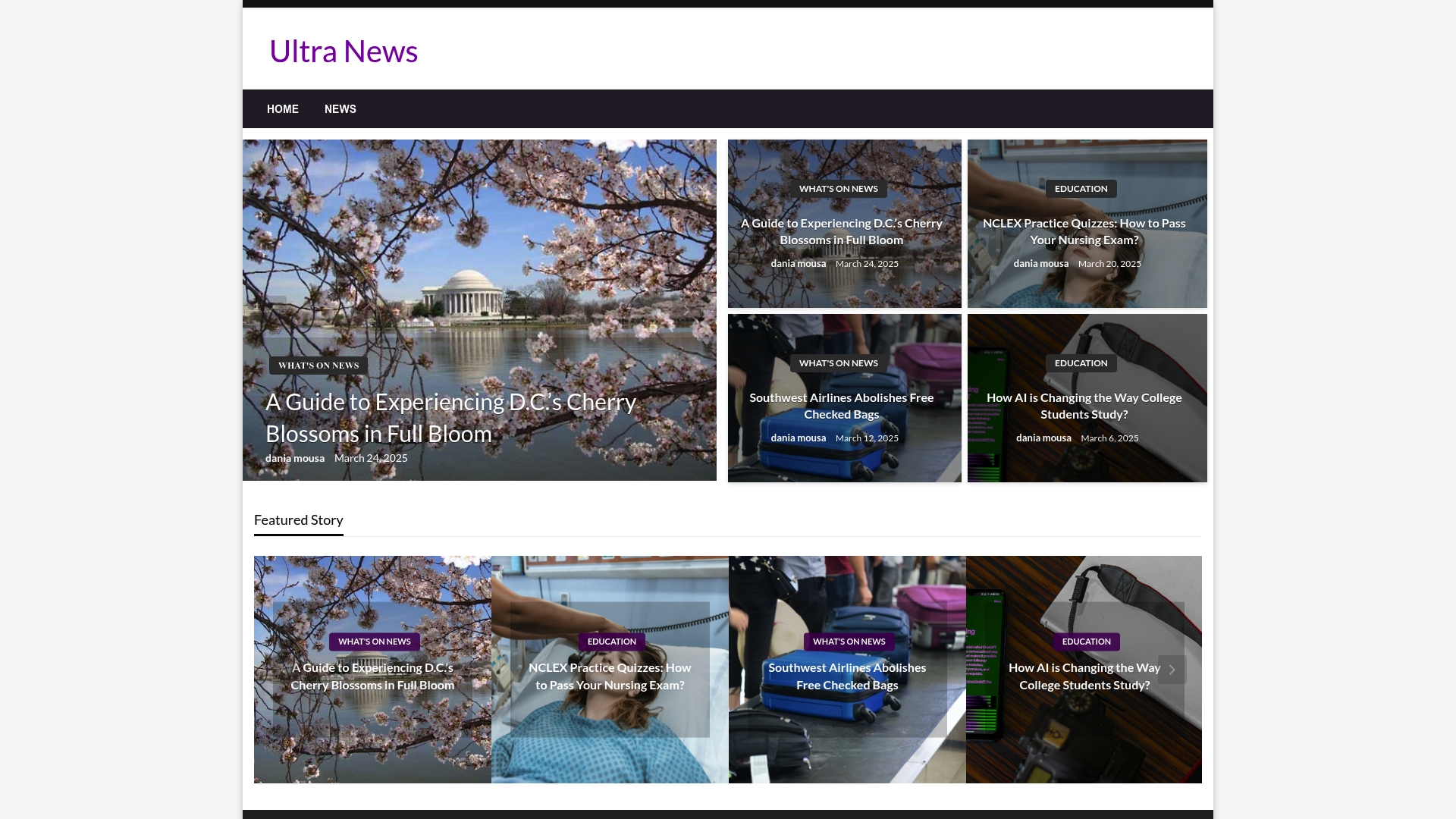
Start building your self-reflection toolkit today. Visit Ultra News to access current research, guides, and expert articles on student self-assessment. Take the first step now to transform insight into real progress and unlock your full academic potential.
Frequently Asked Questions
What is student self-assessment?
Student self-assessment is a learning strategy where students evaluate their own academic performance, progress, and growth through critical reflection on their work and learning processes.
Why are clear learning goals important in self-assessment?
Clear learning goals provide direction and motivation for students, transforming vague aspirations into actionable targets that help measure and track academic progress effectively.
How can I develop a habit of reflection in my learning process?
You can develop a reflection habit by keeping a learning journal to document experiences and insights, or by using digital tools that encourage regular pauses to analyze your educational progress.
What role does feedback play in effective self-assessment?
Feedback from peers and teachers offers unique perspectives that enhance understanding, promoting continuous improvement, and providing specific insights into areas for academic growth.
